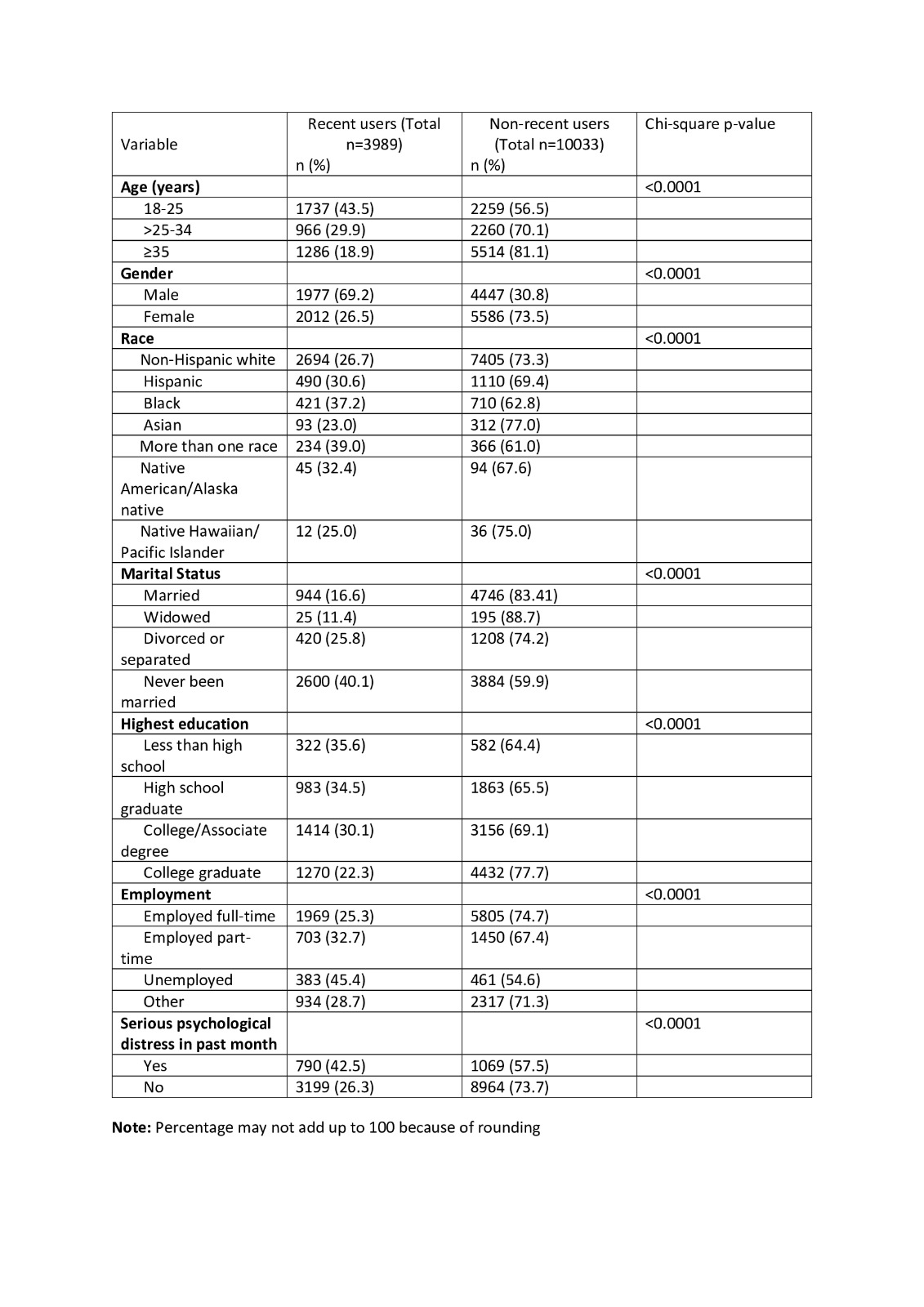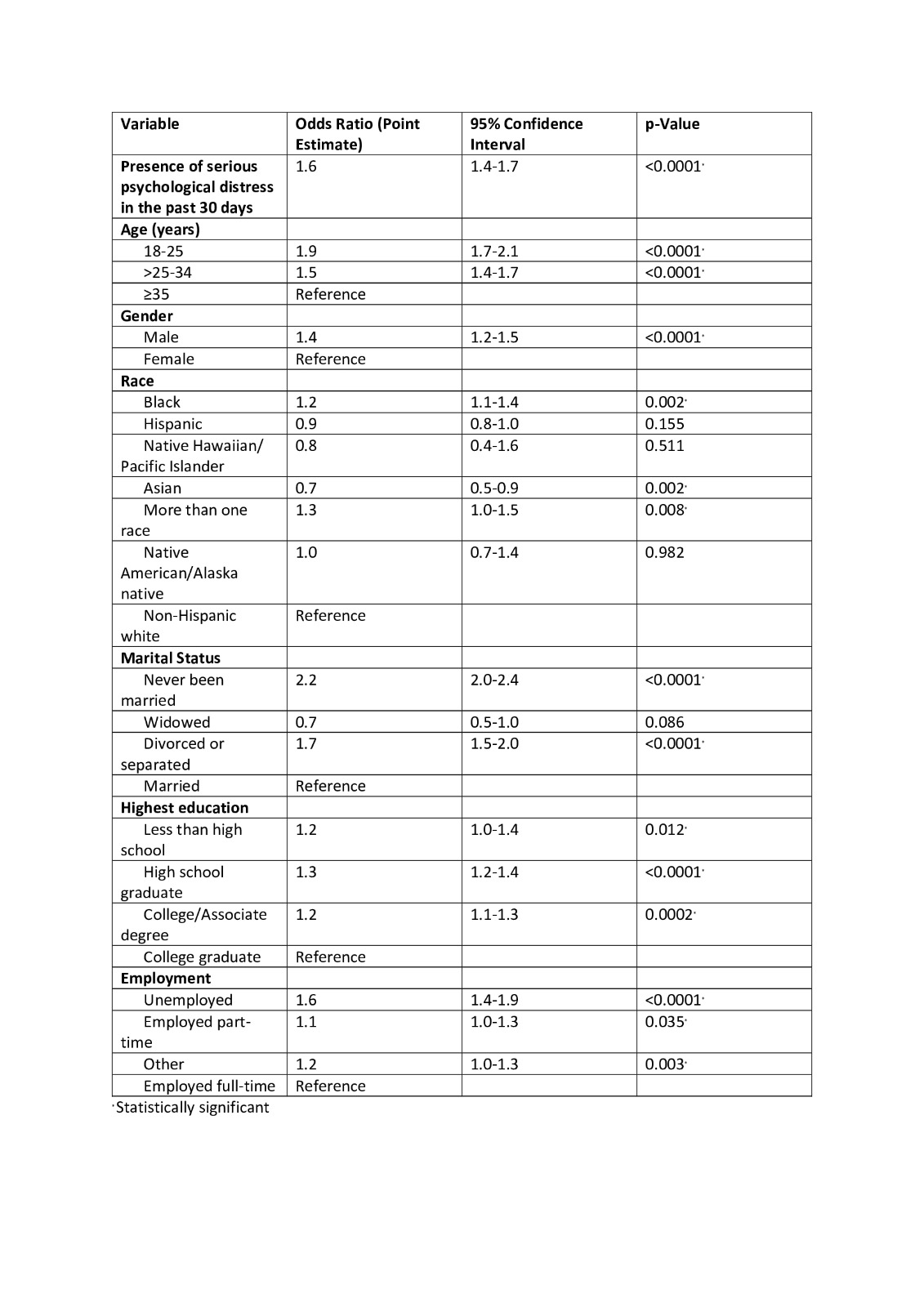Background: In the US, Marijuana is the most used substance, with 18% of the population having tried it at least once. Its use is steadily increasing and stands at a staggering 43% amongst college-aged adults. Marijuana has been known as a self-coping means for anxiety. The recent increase in marijuana use and its effect on anxiety led us to investigate the demographic determinants and psychological distress that escalate its use.
Methods: We used data from the National Survey on Drug Use and Health (NSDUH) for 2020 (7). It is a nationwide survey across all 50 states of the United States, providing updated data on substances, mental and physical health status, and demographics. The survey participants are aged 12 and above. In SAS 9.4 statistical software, we analyzed the data using logistic regression and completed a case analysis. Since the dataset contains imputed variables by default, there was no missing data. Recent use of marijuana was defined as use within the past 30 days.
Results: Out of 32,893 participants, 27170 were adults aged 18 and above. 13,133 (48.4%) adult participants never used marijuana, and 15 whose data were missing were excluded. In our dataset comprising 14022 Marijuana users, 3989 (28.4%) admitted to recent use. There were 3996 (28.5%) in the age group 18-25, 3226 (23.0%) in the age group >25-34, and 6800 (48.5%) ≥35 years of age. 6424 (45.8%) were males. Non-Hispanic whites formed the largest group at 10099 (72.0%), followed by 1600 (11.4%) Hispanics and 1131 (8.1%) Blacks. Other demographic variables are shown in Table 1. Recent use was associated with serious psychological distress in the past month, age, gender, race, education, marital status, and employment status. Presence of serious psychological distress in the past month (adjusted Odds Ratio [aOR] 1.6, 95% Confidence Interval [CI] 1.4-1.7), younger age(18-25 years aOR 1.9, 95% CI 1.7-2.1), male gender (aOR 1.4, 95% CI 1.2-1.5), Black race (aOR 1.2, 95% CI 1.1-1.4), being divorced or separated (aOR 1.7, 95% CI 1.5-2.0), never been married (aOR 2.2, 95% CI 2.0-2.4) and being unemployed (aOR 1.6, 95% CI 1.4-1.9) were associated with a significantly higher frequency of recent use. However, being Asian (aOR 0.7, 95% CI 0.5-0.9) was significantly associated with lower odds of recent use after adjusting for other factors. Other findings are shown in Table 2.
Conclusions: This study on a nationwide survey found that the recent use of marijuana is associated with concurrent severe psychological distress, age, race, gender, education, and marital and employment status.


